How rewilding can help boost food security
In India, an urban foraging movement is helping to restore relationship with nature and encourage rewilding projects that incorporate edible plants.

Several years ago, Shruti Tharayil was running a nonprofit in rural Telangana when she came across Chennamma, a Dalit farmer who made a living by growing organic vegetables on her less-than-one-acre farm. Untouched by chemical pesticides or herbicides, Chennamma’s land supported a host of uncultivated greens, which she occasionally picked and cooked.
Tharayil’s interest was piqued. “That was the first time I noticed somebody collecting and consuming plants that I always thought were unwanted or weeds,” she says. Soon, she began accompanying local women on trips to nearby forests to learn more about local wild greens: how to identify and distinguish between different species, and how to cook and consume only the edible parts.
Over time, Tharayil familiarized herself as much as possible with India’s vast trove of edible wild plants, of which there are at least 1,532. But it wasn’t until she moved back to the city that she started foraging in earnest. In the early days, Tharayil stumbled upon many of the wild plants she was researching in her mother’s 250-square-foot terrace garden in the decidedly urban setting of Pune. Others she spotted in the building complex where she now lives in the heart of Chennai, a city of more than 12 million people. Then, in 2018, she created Forgotten Greens, a platform where she began documenting her small experiments with foraging. Before long she was taking fellow enthusiasts on foraging walks in the city, teaching them how to identify and cook these uncultivated greens.
Tharayil’s interest goes beyond foraging as a culinary tool. It extends to understanding the practice as a form of rewilding, and a way to build climate resilience. “It is one of the most direct, rewarding routes towards restoring humans as part of nature, rather than apart from nature,” she says – and developing “deeply intimate relationships with the locations and species that nourish us.”
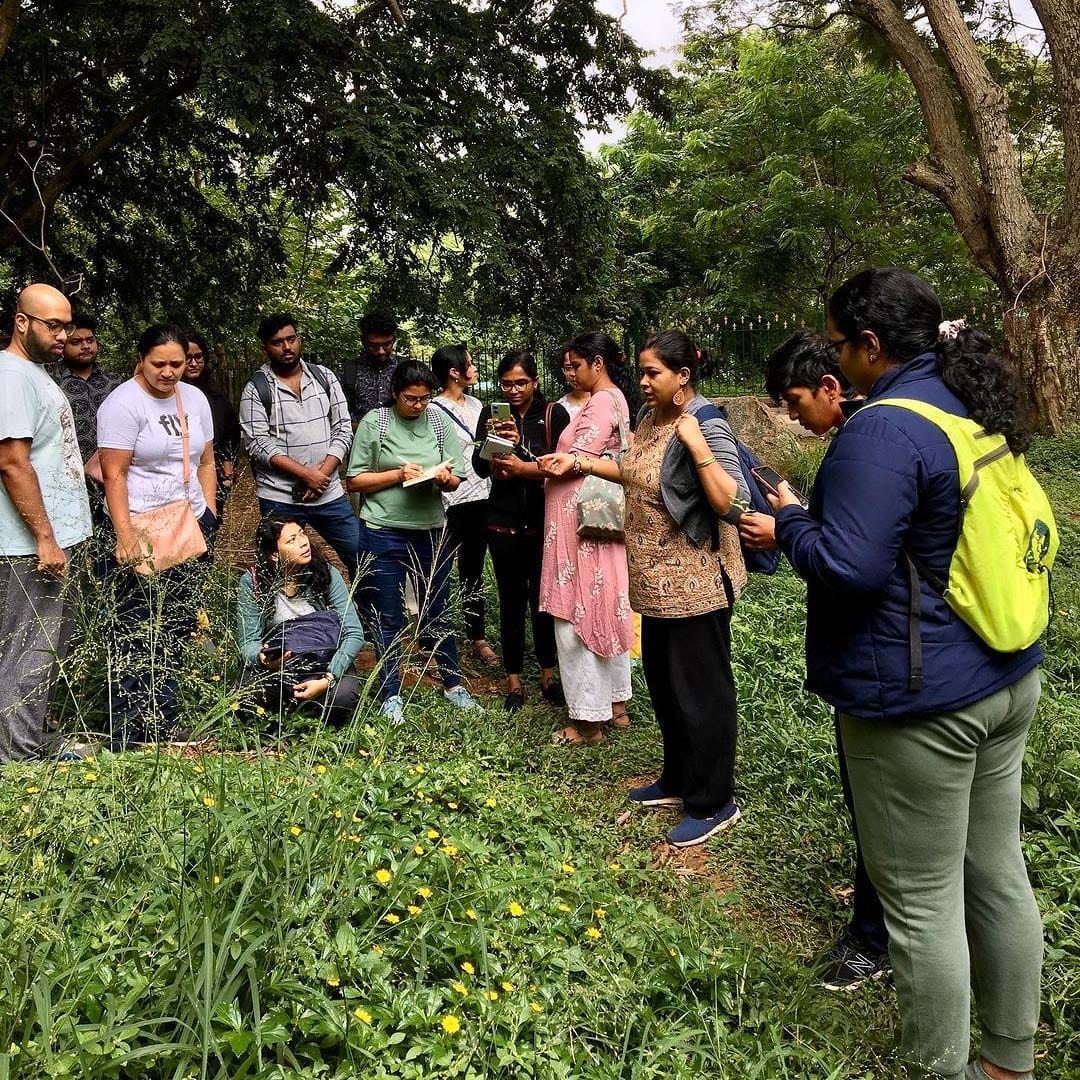
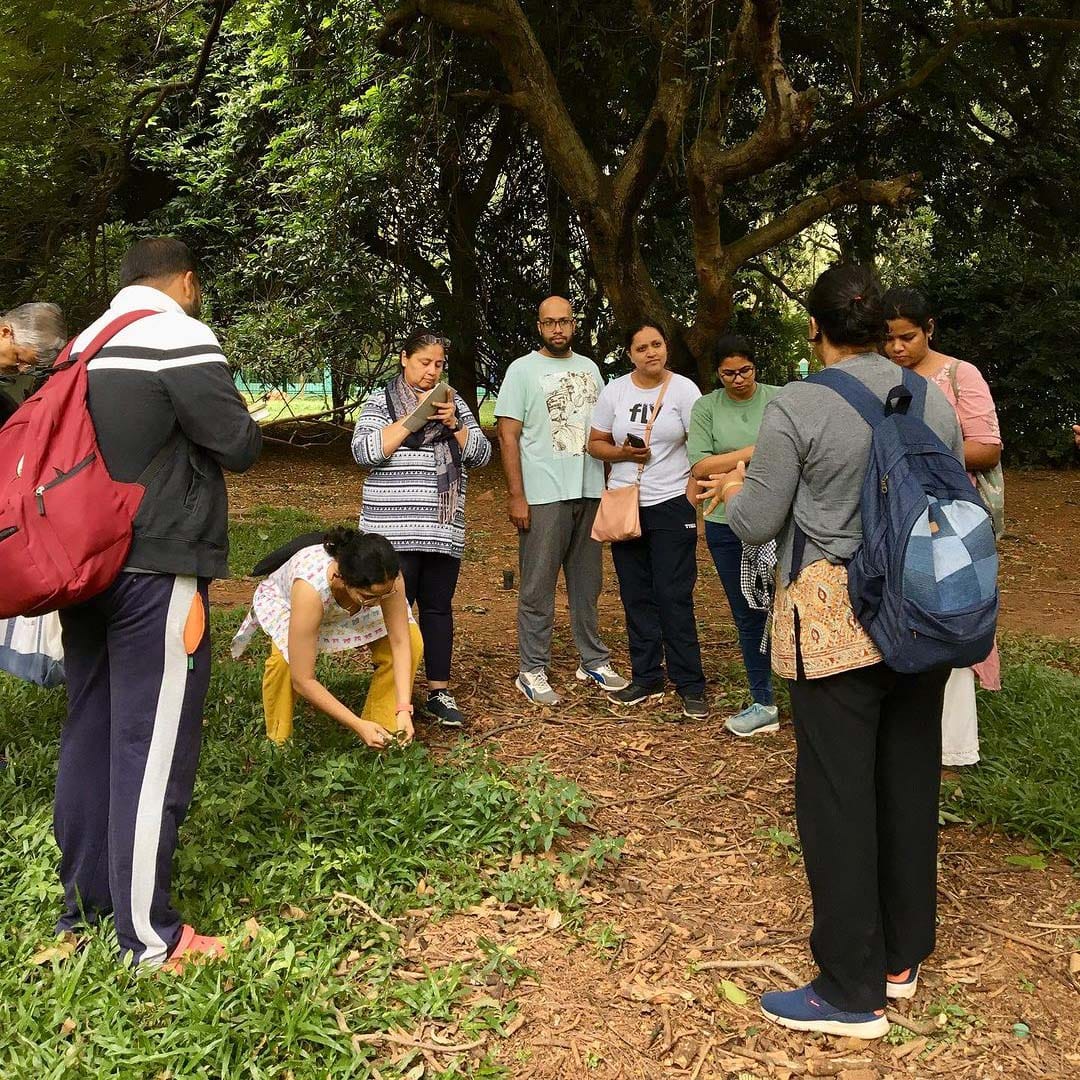
Shruti Tharayil (first photo, third from right) leading a wild food walk in Cubbon Park, Bangaluru. Photo: Forgotten Greens.
Finding wild foods in urban environments
At first glance, it’s hard to imagine India’s concrete, crowded and highly polluted cities to be home to a wealth of wild greens, mushrooms and other edible species. Yet that’s exactly what you might find in the parks, parking lots, abandoned buildings, unused private plots, sidewalks, lakes and sporadic wooded areas that dot urban landscapes.
On Tharayil’s urban foraging walks, participants are likely to run into the Bengal dayflower (Commelina benghalensis), which flourishes in parks and on the sidewalks during the rains. With its striking blue and white flowers, which are edible along with the leaves and shoots, the plant is relatively easy to spot. Then there’s the stinking cassia (Senna tora), so called because of the smell that emanates when its leaves and stems are plucked. When cooked and eaten, the tender edible leaves boost immunity during the monsoons. Another prolific presence is common purslane (Portulaca oleracea), distinguished from its non-edible counterparts by the smooth ovate leaves, pink-tinged stems and tiny yellow flowers. The creeper thrives on the roadsides amid intense heat because its succulent leaves can store water. For the same reason, it can cool the body when eaten in summer.
Most of these plants have long been part of India’s culinary heritage, Tharayil points out. But few urban Indians – especially from upper-class, upper-caste communities – know about them, or have the ability to recognize and distinguish between different species.
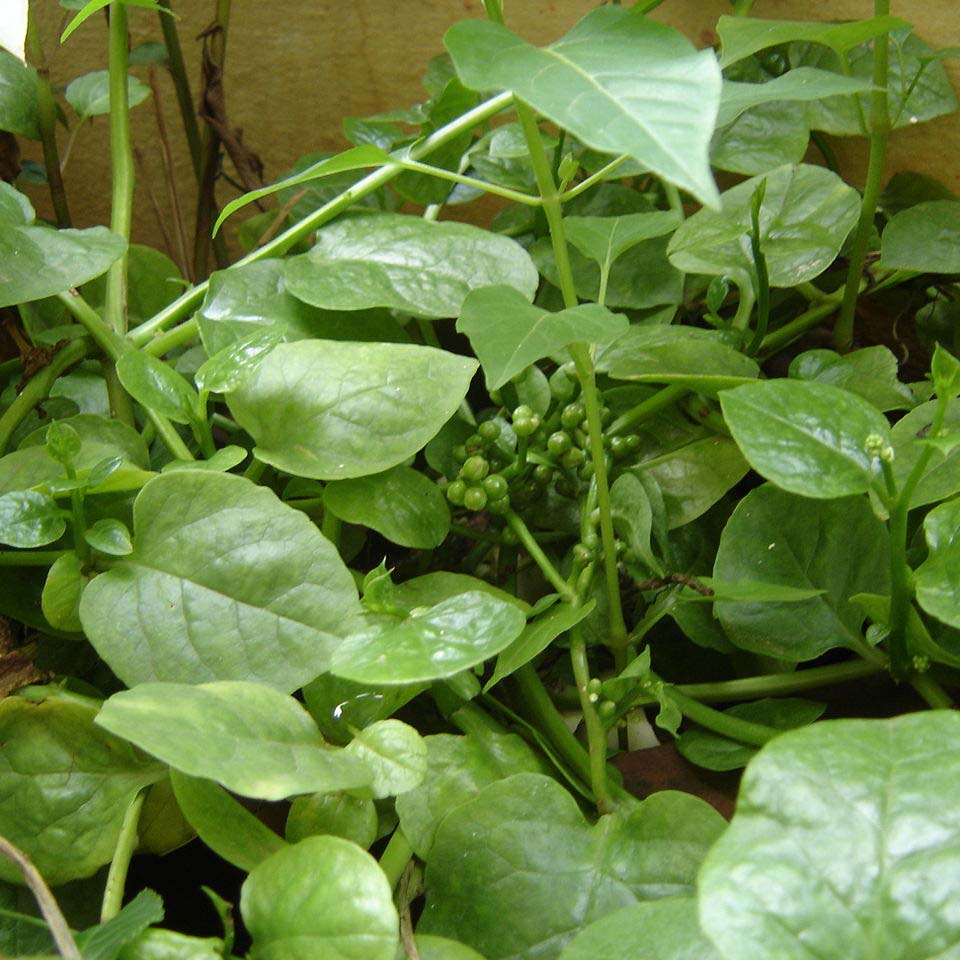

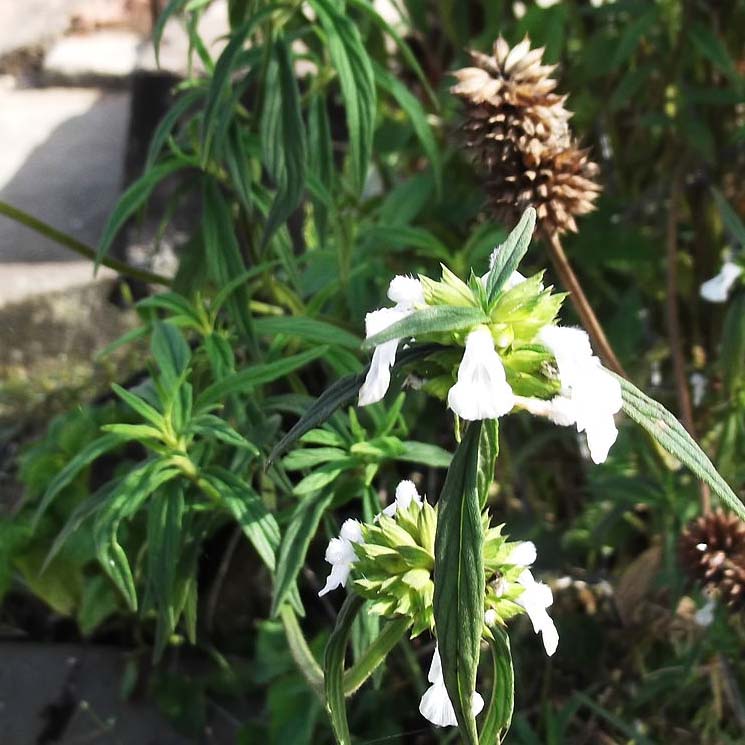
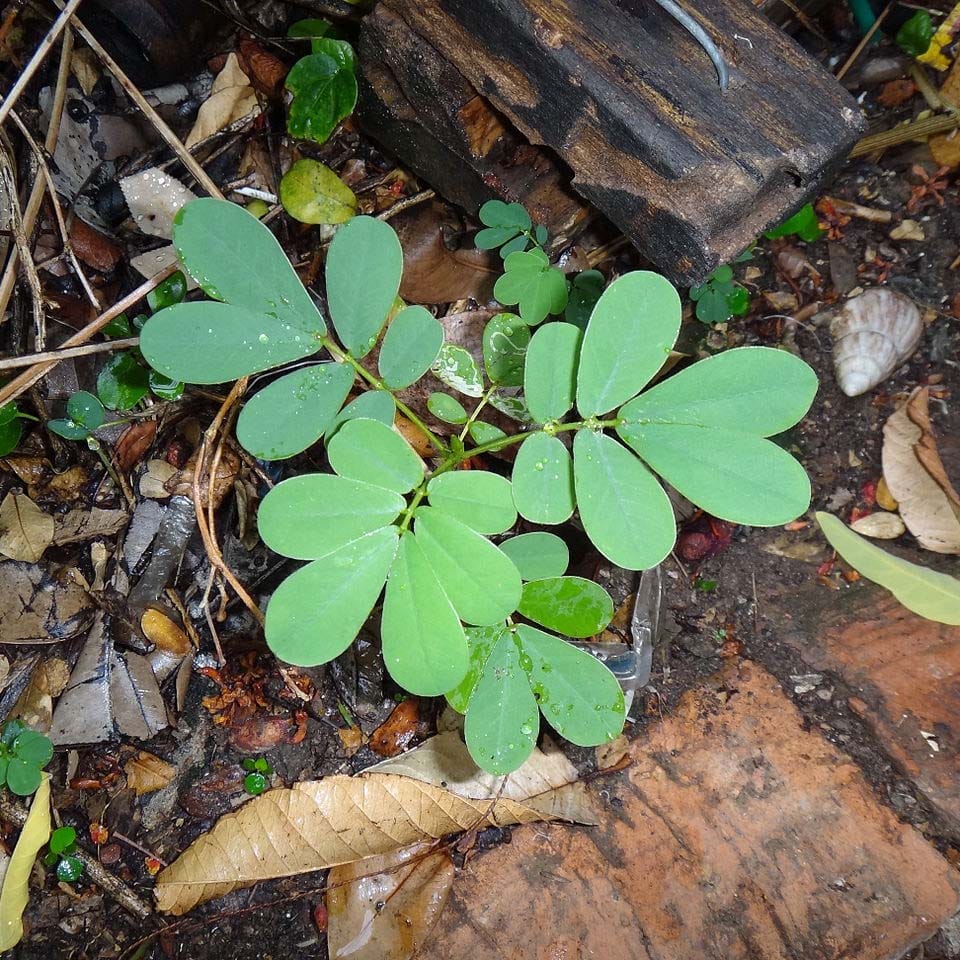
Clockwise from top left: Malabar spinach (Basella alba), common purslane (Portulaca oleracea), stinking cassia (Senna tora) and gasaya saag/common leucas (Leucas aspera). Photos: Wikimedia Commons.
Part of the reason is because foraging in cities has traditionally been practised by India’s urban poor communities, who depend on foraged plants to supplement food bought from the market. Urban poor women in particular are intimately familiar with local plants and where to find them, says Seema Mundoli, who researches and teaches sustainability at Azim Premji University. According to a 2021 study she co-authored, an overwhelming majority of those who forage in the city of Bengaluru, for instance, are older and middle-aged women from oppressed caste communities.
Mundoli’s research started when one of her colleagues spotted a group of women scraping greens off a dry lake bed while grazing their cattle in the nearby fields. “When we asked them what they were collecting, they said it was a leafy vegetable, known locally as Honagone Soppu [Alternanthera sessilis], which is very good for the eyes and highly nutritious.”
Needless to say, the dynamics of how urban poor women forage bears little resemblance to the curated wild food walks that are becoming increasingly popular among relatively well-off urban Indians. But newcomers to the practice can play an important role in keeping foraging – and urban environments – sustainable.
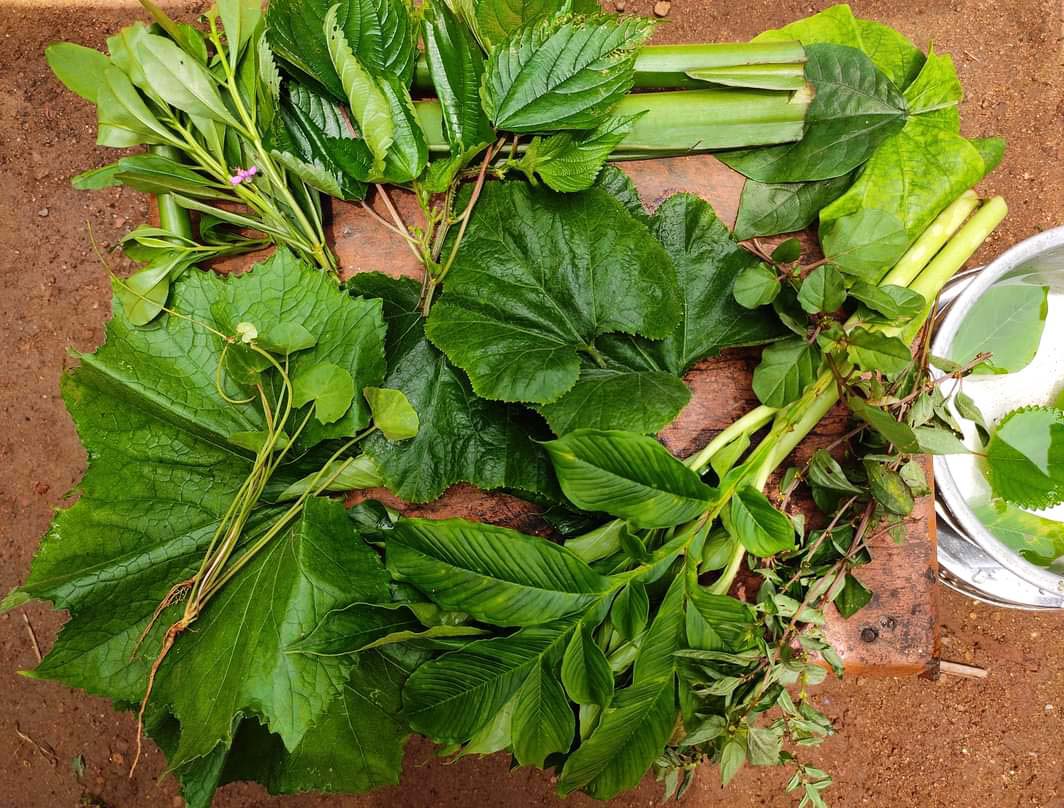
Foraging as an act of care for the Earth
Like Tharayil, illustrator and art director Shweta Mohapatra is part of the growing community who are reviving interest in and knowledge of urban foraging. Mohapatra’s love for and interest in wild foods stems from her mother’s backyard vegetable garden in urban Bhubaneswar in the eastern state of Odisha, where a host of other edible greens such as the creeping woodsorrel (Oxalis corniculata) would sprout on their own alongside the radish and coriander her mother had sowed. These plants were never weeded out, but rather stir-fried on their own or added to vegetable medleys. “Because of that, I felt like I had a link to the earth, which I lost when I moved to bigger cities,” Mohapatra says.
In the concrete high-rises on the outskirts of New Delhi, she found little space to grow her own food. That’s when she started paying attention to what was growing around her, occasionally foraging from the lime, neem, curry and moringa trees that dotted her apartment complex.
Foraging, both Tharayil and Mohapatra insist, is an act of care for the Earth. Doing it consciously and responsibly means following certain principles. It means never uprooting the whole plant, and collecting only the tender shoots and leaves. It also means taking only what you need and no more, leaving enough for the ecosystem of species that may be dependent on that vegetation.
Sadly, the ability to forage is under threat due to rapid urbanization. As built-up areas expand in cities, the space available for uncultivated plants to grow is fast shrinking. When open sites are converted into dumping grounds, and lakes polluted with industrial waste and sewage, it becomes hazardous to collect and consume plants from these areas. The privatization of urban commons such as lakes, wetlands and parks excludes people who have traditionally used these green spaces for foraging. Parks, in particular, treat foragers like a nuisance, keeping them at bay with signs such as “no plucking leaves or flowers.”
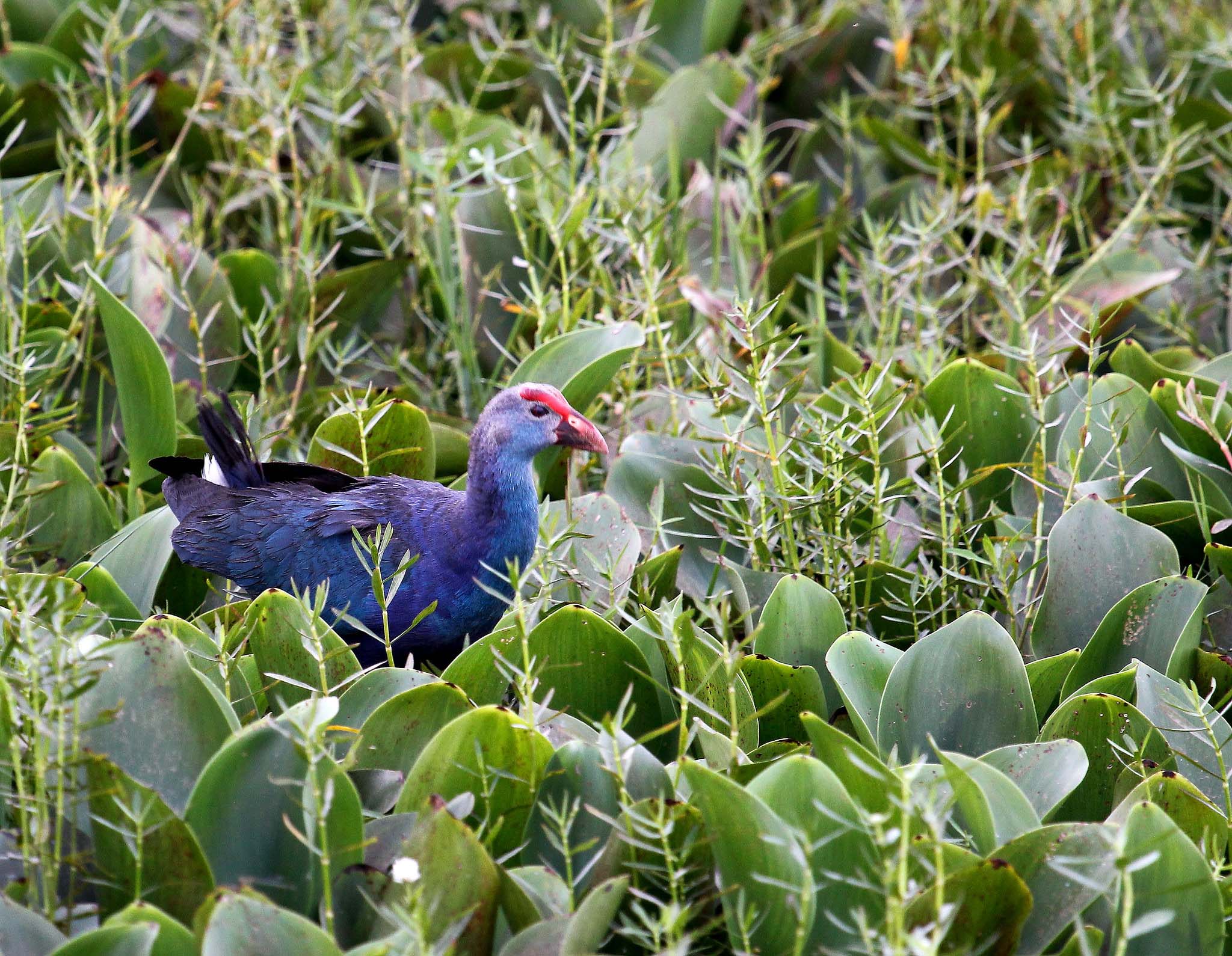
The antidote, suggests Mundoli and her fellow researchers, lies in redesigning urban spaces for forageable species to flourish, and making them available to marginalized communities. This might include retaining patches of neighbourhood parks and lakesides for urban foraging instead of converting them entirely into entertainment zones.
Another solution could be to reclaim illegal dumping grounds. Bengaluru’s Jakkur Lake is an instance of such rejuvenation. In the 2000s, the lake and its surroundings had turned into a garbage heap. This prompted a local citizens’ group to step in and rewild the area with 1,000 native trees, 300 varieties of native medicinal herbs, shrubs, wetland plants, grasses and undergrowth. They restored the natural ecosystem and created an environment conducive to foraging.
A similar effort is under way by some Chennai residents, who have reclaimed a dumping ground and are gradually rewilding it, making space for non-cultivated plants to flourish. Many native species have returned to this newfound community garden, says Tharayil, who conducted some of her recent foraging walks in the restored park.
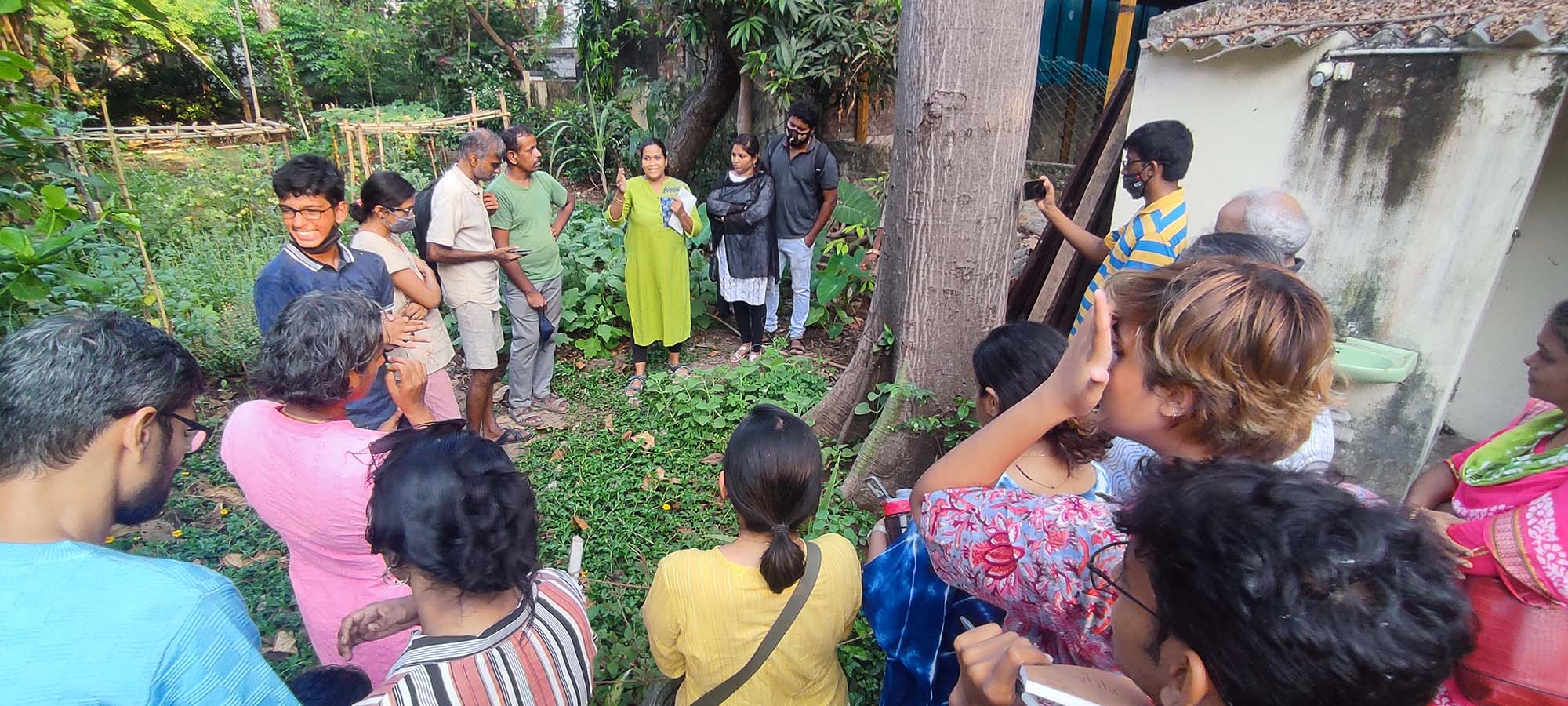
Connecting to the land as a form of resilience
For Mohapatra, not knowing where her food comes from is a form of disassociation with the land. Conversely, being able to forage at least some of her own food is a way of reconnecting with it. During the Covid-19 pandemic, having briefly moved back to her childhood home in Odisha, she began documenting wild greens native to the state on her Instagram page. She pores over scientific journals and surveys by agricultural and forest departments, but much of her knowledge of foraged species was passed down orally by her mother and grandmother. Other plants, such as the gasaya saag/common leucas (Leucas aspera), pita saag/slender carpetweed (Mollugo oppositifolia) and susunia saag/four-leaf clover (Marsilea quadrifolia), were introduced to her by Indigenous sellers at Odisha’s local markets.
With three crops – rice, maize and wheat – providing nearly 60 percent of the world’s calorie intake, climate-resilient wild plants are a source of dietary diversity in our food systems, Mohapatra says. “The more diverse our food is, the better it is for our bodies and for the environment.”
Indeed, amid rising climate insecurities, foraging can improve social and ecological resilience in urban ecosystems. Many of India’s wild plants can thrive in drought-like conditions, withstand high temperatures and survive in saline soil and wastelands. Others, such as Malabar spinach (Basella alba), are hardy enough to be grown in home gardens with minimal effort. Historically, wild plants have served as famine foods. There’s documented evidence of people consuming the leaves of taro (Colocasia esculenta), jute (Corchorus olitorius) and the Bengal dayflower during the devastating 1943 Bengal famine.
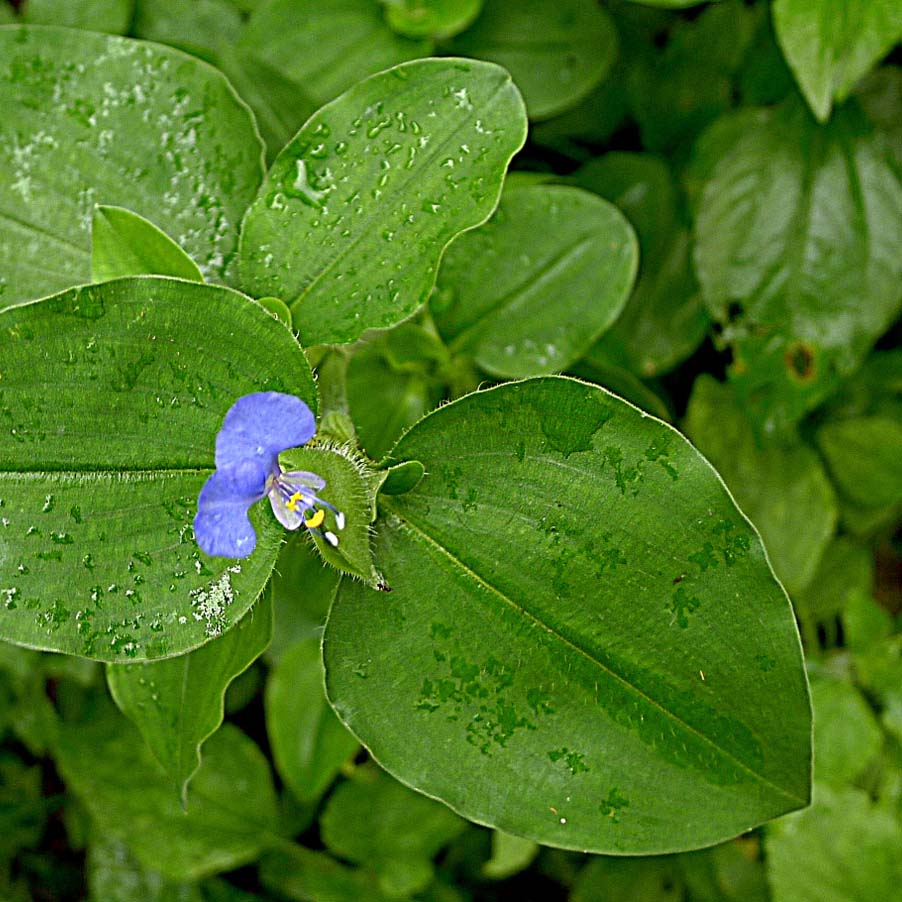
More recently, when state borders in India were closed during the initial months of the pandemic and food supply chains were in disarray, even people who had no links with traditional foraging practices found themselves looking for wild greens, says Goa-based Maryanne Lobo. An Ayurveda physician who forages for herbal medicines, she found herself leading groups of locals and stranded tourists on foraging trips, acquainting them with the edible species that grew around them.
Foraged foods are a rich source of nutrients and can play a crucial role in food security, especially for those who can afford little else. “If you can get the same greens for free that you would otherwise buy from the market, it can definitely contribute to the resilience of any family,” Mundoli says.
Many daily wage earners she spoke to during her research said that if they don’t make enough from their work on any given day, they collect Ceylon spinach (Talinum fruticosum) or leaves from a moringa tree growing nearby to add volume to their curries. “These women don’t go out of their way to forage, because they don’t have the luxury of time,” Mundoli says. “Rather, it is part of the daily rhythm of their lives.”
Tips on foraging
Whether you’re foraging in India or closer to wherever your home is, there are some things to keep in mind.
Tharayil emphasizes attention to timing. Most wild plants are seasonal in nature, and “what you forage at any point should depend on the season and where it’s growing.”
It’s also crucial to understand that not all parts of a plant are edible, an edible plant may not necessarily be palatable, and a medicinal plant may not be edible at all, she adds.
Mohapatra advises inexperienced foragers in particular to stay away from completely unknown plants. “Foraging is not necessarily about picking unfamiliar, exotic or very region-specific plants,” she says. “You can also forage what you can easily identify.”




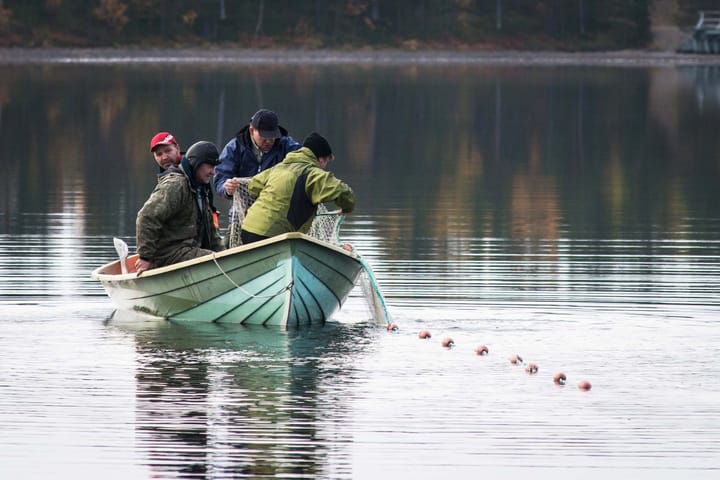


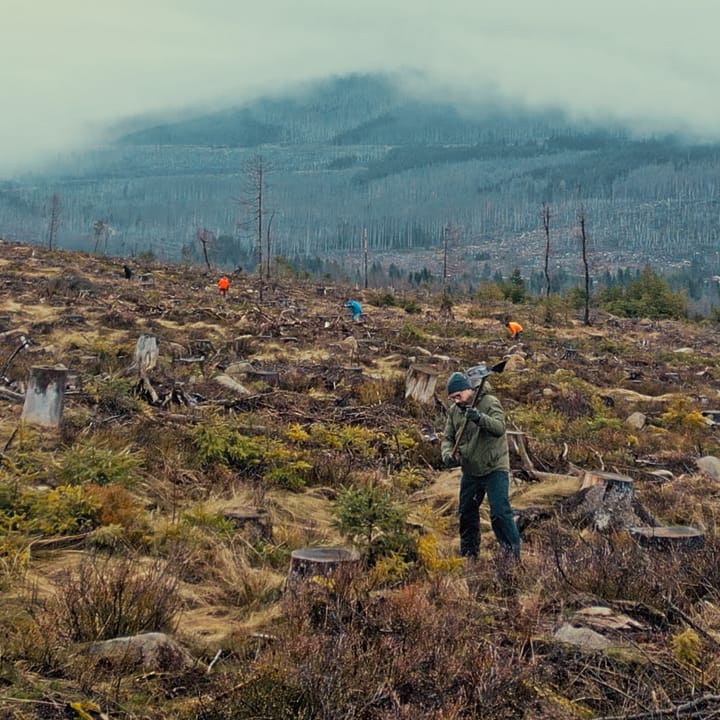

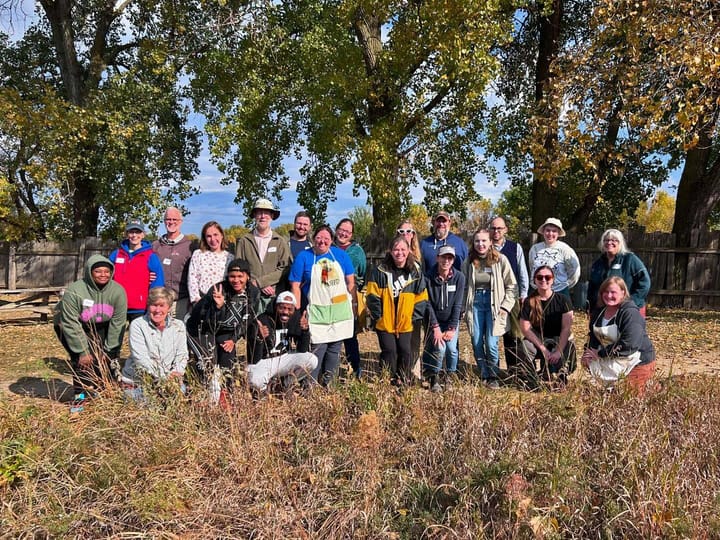
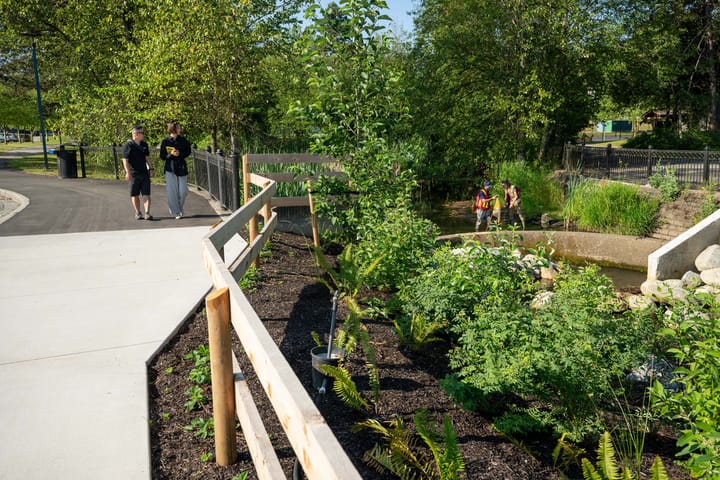
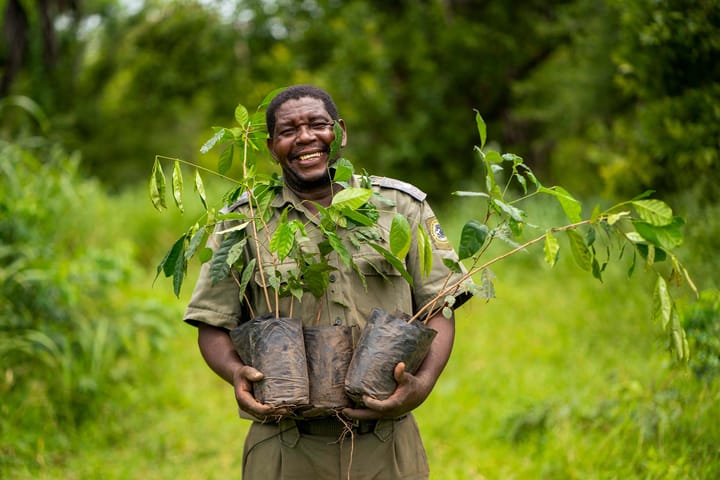
Comments ()